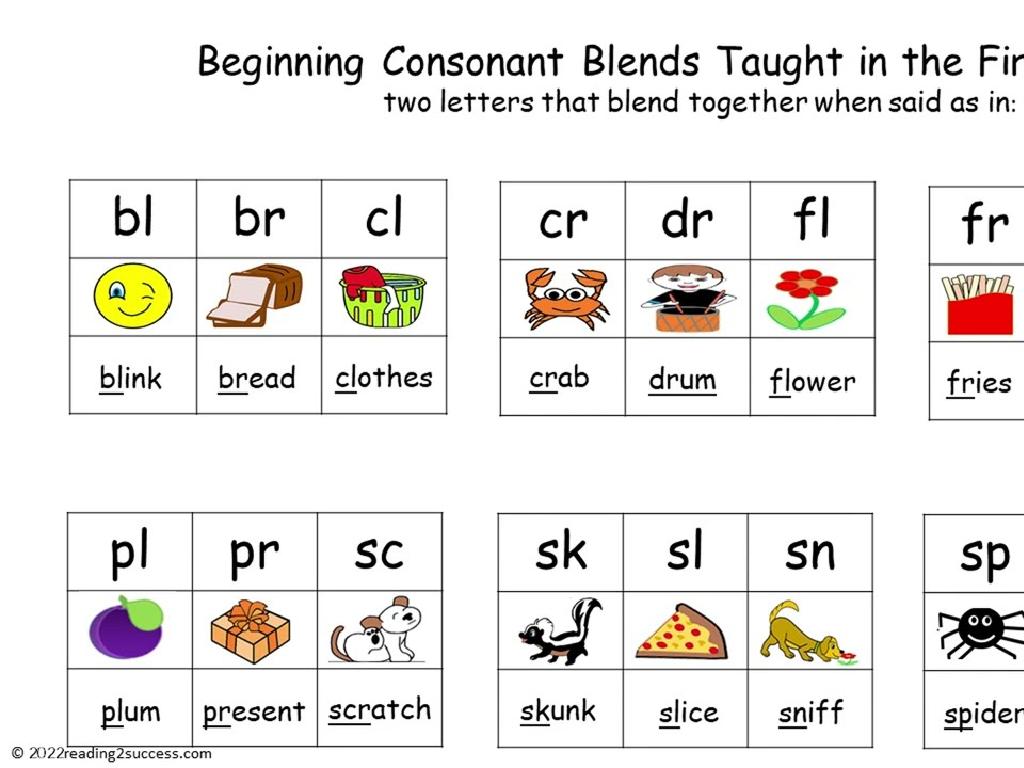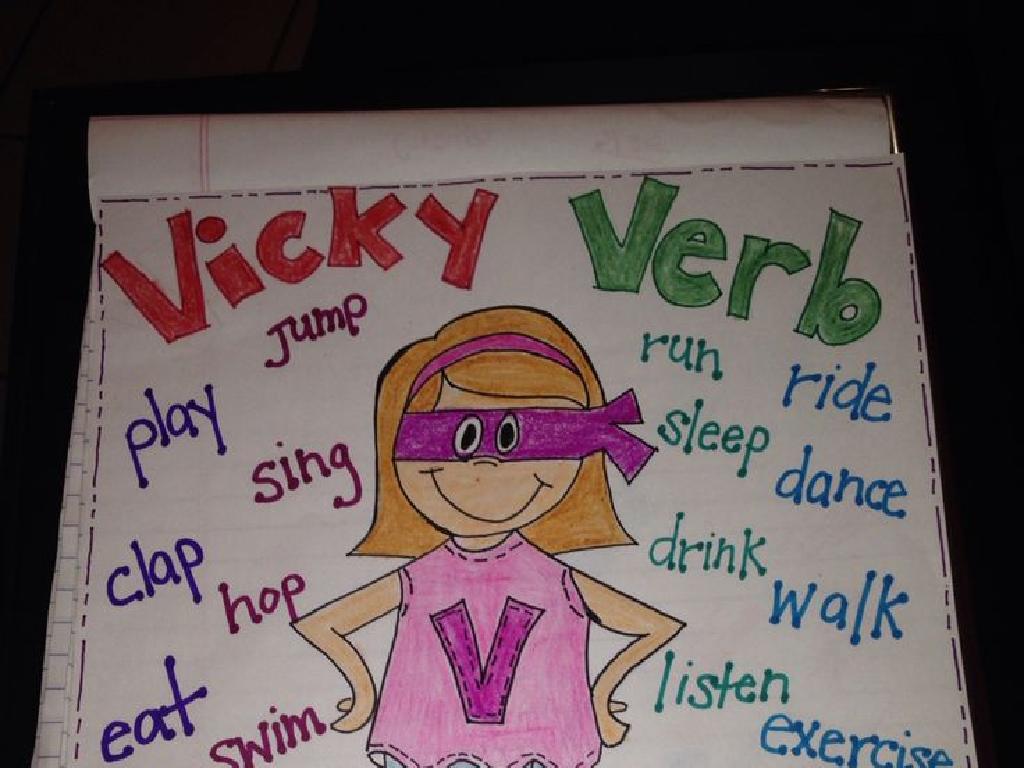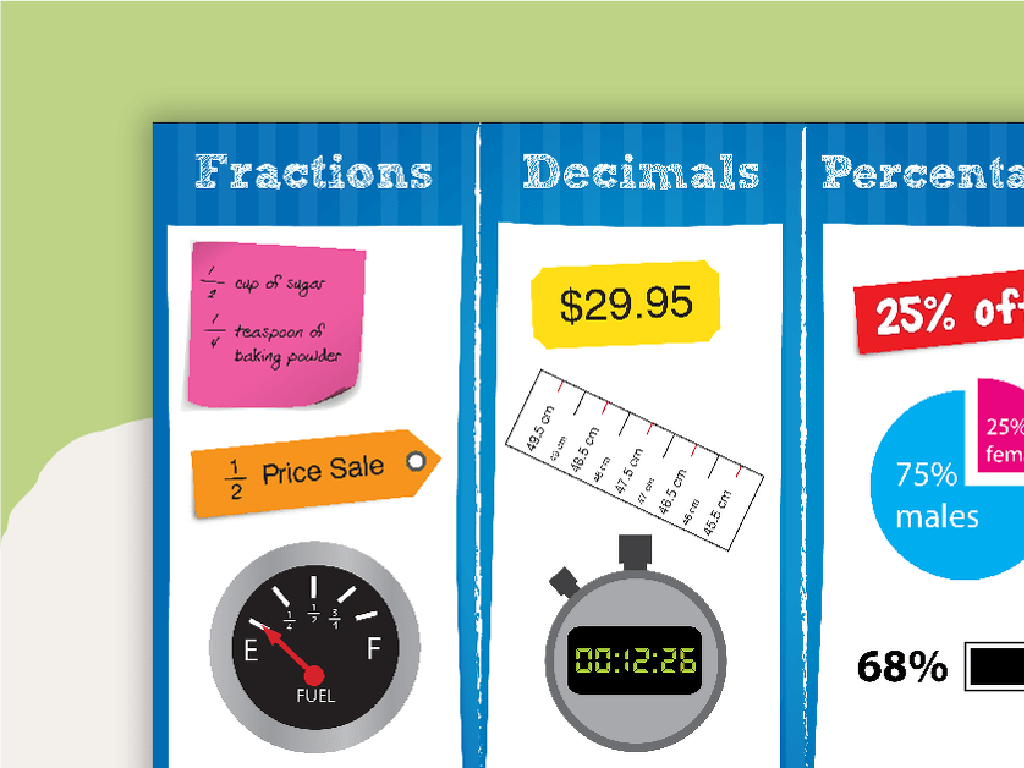Show Character Emotions And Traits
Subject: Language arts
Grade: Third grade
Topic: Descriptive Details
Please LOG IN to download the presentation. Access is available to registered users only.
View More Content
Descriptive Details: Character Emotions and Traits
– Learning about character feelings
– Why characters matter in stories
– Characters make stories interesting and relatable.
– What are emotions and traits?
– Emotions are feelings, traits are personality features.
– Examples of emotions and traits
– Happy, sad, brave, shy, kind, and selfish.
|
This slide introduces the concept of character emotions and traits to help students understand and engage with the characters in the stories they read. Emphasize that knowing a character’s emotions and traits can make reading more enjoyable and relatable. Explain that emotions are the feelings a character has, like happiness or sadness, while traits are the parts of a character’s personality, like being brave or shy. Provide examples of both emotions and traits, and encourage students to think of characters from their favorite books and the emotions and traits they exhibit. This will set the foundation for deeper discussions and activities related to character analysis.
Understanding Characters’ Emotions
– What are emotions?
– Emotions are feelings like joy or fear
– Examples of emotions
– Happy, sad, angry, scared, excited
– Matching faces to emotions
– Let’s make faces to show how these feel!
– Emotions tell us about characters
|
This slide introduces the concept of emotions and their importance in understanding characters in a story. Emotions are the feelings that characters experience, such as happiness or anger. Provide examples of common emotions and encourage students to make faces that correspond to these emotions as a class activity. This will help them to connect with the characters and better understand their traits and actions. Emphasize that recognizing emotions in characters can give us clues about the story and why characters behave the way they do. For the activity, guide students to think about times they felt these emotions and how their faces looked. This will prepare them to identify and describe character emotions in stories they read.
Exploring Character Traits
– Traits describe personality
– Like how we describe a friend
– Examples: brave, kind, curious
– ‘Brave’ like a superhero, ‘kind’ like a good friend
– Traits make characters unique
– Why is it fun when characters are different?
– Think of characters with traits
– Can you name a ‘curious’ character from a book?
|
This slide introduces the concept of character traits to help students understand how to describe and differentiate characters in stories. Traits are adjectives that give us insight into a character’s personality, making them more relatable and memorable. Use examples that are easily relatable to third graders, such as characters from popular children’s books or movies. Encourage the students to think of characters they know and identify their traits, fostering a connection between the literature they read and the real world. This activity will help students improve their descriptive writing skills and enhance their ability to understand and interpret characters in stories.
Showing, Not Telling in Writing
– ‘Show’ emotions in stories
– Instead of saying ‘happy’, describe a big smile and excited clapping.
– Use actions to describe traits
– Describe someone as brave by the brave things they do, like exploring.
– Rewrite ‘telling’ sentences
– Practice with examples
– Let’s turn ‘Sara is sad’ into a sentence that shows she’s sad.
|
This slide introduces the concept of ‘showing, not telling’ to help students learn how to express character emotions and traits more vividly in their writing. Encourage students to think about how emotions can be expressed through a character’s actions, words, and body language. Provide examples of common emotions and ask students to describe them without using the emotion’s name. For instance, instead of writing ‘John is brave’, they could write ‘John marched into the dark cave without hesitating’. This exercise will help students enhance their descriptive writing skills and make their stories more engaging. During the practice session, guide them to transform simple ‘telling’ sentences into ‘showing’ sentences by using descriptive details.
Describing Characters with Details
– Use details to show feelings
– E.g., ‘scrunched face’ shows anger
– Describe actions, words, thoughts
– ‘Whispered to a friend’ shows secrecy
– More details for better understanding
– ‘I wish I could fly’ shows longing
– Examples bring characters to life
– ‘Charlie tiptoed in late’ – Charlie is sneaky?
|
This slide aims to teach students how to use descriptive details to convey a character’s emotions and traits in a story. Encourage them to think about how a character’s actions, what they say, and their thoughts can give us clues about their feelings and personality. The more specific the details, the clearer the picture of the character becomes in the reader’s mind. Use examples from familiar stories or create hypothetical scenarios to illustrate how details make characters more vivid and real. For instance, a character who ‘stomps their feet’ might be angry, while one who ‘shares their lunch’ might be kind. Discuss how these cues help us infer what the characters are like.
Let’s Practice Describing Characters!
– Understand character emotions/traits
– Example: Mia’s brave entrance
– Mia shows bravery by walking confidently in a dark, cold room.
– Your turn to describe a character
– I’ll give a situation, you describe the character’s reaction.
– Use the situation to show traits
– Think about how the setting affects the character.
|
This slide is designed to engage students in an interactive activity where they practice identifying and describing character traits and emotions based on given situations. Start by explaining how descriptive details in a story can reveal a lot about a character’s personality or feelings. Use the example of Mia to illustrate how her actions in a dark and cold room demonstrate her bravery. Then, provide students with various scenarios and ask them to describe a character’s possible emotions or traits in response to those situations. Encourage creativity and discussion about why they chose specific traits or emotions. This activity will help students understand how to use context to infer character details, which is a key skill in reading comprehension.
Class Activity: Emotion Charades
– We’re playing Emotion Charades
– Each student gets an emotion card
– Act out your emotion silently
– Use body language and facial expressions
– Classmates guess the emotion
|
This activity is designed to help students understand character emotions and traits through a fun and interactive game. Each student will receive a card with an emotion or trait written on it. They will then act out this emotion or trait without using any words, relying solely on their body language and facial expressions. The rest of the class will try to guess the emotion or trait being portrayed. This will not only help students in identifying emotions and traits but also in expressing them non-verbally. Possible emotions/traits for the cards: happy, sad, angry, excited, scared, shy, brave, kind, jealous, curious. Make sure to encourage all students to participate and remind them that making mistakes is a part of learning. This activity will enhance their understanding of descriptive details in literature.
Conclusion & Homework: Exploring Characters
– Congrats on learning character traits!
– Read a story for homework
– Pick your favorite storybook
– List characters’ emotions and traits
– Use clues in the story to find feelings and characteristics
– Share your discoveries tomorrow
|
Today’s lesson focused on understanding the emotions and traits of characters in stories, which helps us to connect with and understand them better. For homework, students are encouraged to apply this knowledge by reading a story of their choice and identifying the emotions and traits of the characters they encounter. Encourage them to think about how the characters act and what this shows about their personality. Remind students to look for descriptive words and actions that give clues about the characters’ feelings and traits. Tomorrow, we will have a discussion where each student will have the opportunity to share their findings and reflect on how these details enhance the story.





